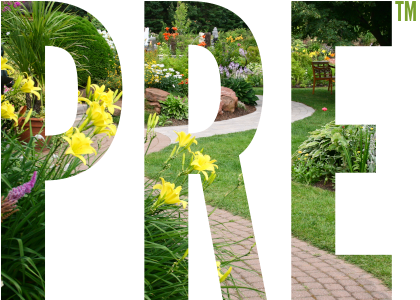Welcome to the Beta 2 release (pre-production version) of the Plant Risk Evaluator (PRE) website. If you are involved in the research, development or distribution of horticultural plants (and other introduced plants) we hope you’ll explore the site, get to know us better, and join our growing PRE community.
PRE Features
- 95% accurate in predicting both invasive and non-invasive risk in given region;
- Efficient! Assessment time can be just 3 to 4-hours per plant;
- Transparent! Justifications have associated references and reviewer feedback is tracked;
- Secure, web-based platform for plant screening and collaboration;
- Global climate mapping tool for accurate and consistent region-specific analysis;
- Designed to evaluate sub-species and cultivars on their own merits; and,
- User-friendly interface.
PRE Benefits
- Staying one-step ahead of local ordinances and regulatory threats;
- Identifying high risk horticultural and other plant species' threats before they take root as bona fide invasives;
- Providing customers of horticultural plants with an evaluation of risk of invasiveness in their region;
- Protecting wild-lands where plants are marketed and sold; and,
- Protecting new plant development investments.
PRE continues to pursue the goal of soliciting horticultural industry feedback for the development of the plant screening process into a widely-used and valued resource that equips every horticultural professional with the knowledge to prevent new plant invasions in regions where they (and their customers) grow, market and sell plants. PRE has become a valuable tool for consumers and landscape advisors to identify potential risk of horticultural plants prior to planting. It has also grown in its utility as a screening tool for non-horticultural plants that are new to a region.
Expanding PRE research beyond California, our Farm Bill PRE Project in 2016-2017 evaluated 200 economically-important ornamental plants in Texas, Illinois, Georgia and Minnesota that, together with evaluations of plants in California, served as a proof-of-concept and provided the foundation of evaluations for the PRE database. The project illustrated how plant scientists at botanic gardens, and regional horticultural stakeholder groups, can utilize PRE to identify a plant’s potential invasive risk, locally; and, how the PRE process fosters common ground on otherwise contentious invasive plant conversations. The PlantRight blog describes the Farm Bill PRE project in greater detail.
From 2021 to the present, annual work group grants from the Western Integrated Pest Management Center (WIPM) have supported a western state network including representatives from Washington, Oregon, Nevada, Arizona, and California. This network has completed an additional 120 evaluations of horticultural plants and other plants deemed to be high priorities to evaluate by partner states.
 If you are involved in the research, development or distribution of horticultural plants or are a plant scientist affiliated with a horticultural college or botanic garden and are interested in evaluating risk (or establishing the absence of risk) of non-native plants, we invite you to join the PRE community. If you are a plant scientist, affiliated with a horticultural college or botanic garden, and would like to learn more about becoming a PRE Screener, please follow this link and fill out this Google form, requesting a PRE Account.
If you are involved in the research, development or distribution of horticultural plants or are a plant scientist affiliated with a horticultural college or botanic garden and are interested in evaluating risk (or establishing the absence of risk) of non-native plants, we invite you to join the PRE community. If you are a plant scientist, affiliated with a horticultural college or botanic garden, and would like to learn more about becoming a PRE Screener, please follow this link and fill out this Google form, requesting a PRE Account.
Check out the Introduction to PRE Tool & Platform video tutorial, here. PRE Screener Training webinars are available to horticultural organizations, colleges and botanic gardens, and specialized individuals who are interested in serving as screeners or reviewers for an affiliated group.
Many thanks to the team that led the PRE model research, at University of California (Davis) and University of Washington: Joseph M. DiTomaso, Christiana Conser, Sarah Reichard, Lizbeth Seebacher and Dave Fujino. Thanks also to Horticultural Research Institute for funding a portion of this research. Funding for the original PRE website was provided by Sustainable Conservation and a USDA Farm Bill grant. Funding for the new PRE beta 2 platform was provided by the California invasive Plant Council through Western Integrated Pest Management Center grant funding and through in-kind efforts of webmaster Dave Waetjen.
